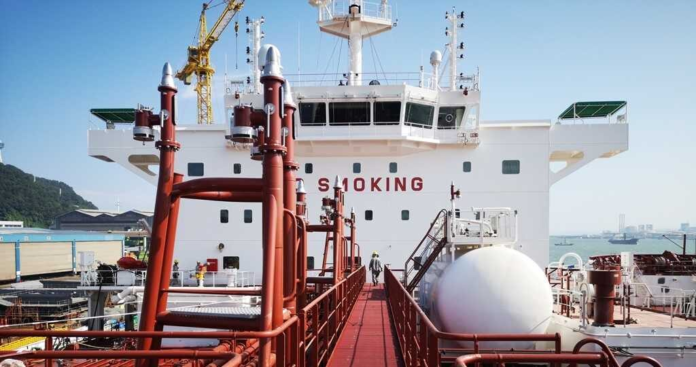P/V Valves are primary venting devices installed on tanker ships to prevent cargo tank damage due to over or under pressurisation.
This configuration enables the tank to “breathe” during pressure changes. Many oil and product tankers of various sizes are outfitted with P/V valves.
Pres Vac, Pressure/Vacuum Valve, Pressure/Vacuum Relief Valve, or High Velocity Pressure/ Vacuum Valve are the other names for it.
P/V valves operate on their own. They operate solely on calibrated pressure settings and do not require any electrical or pneumatic power.
Arrangements
Prior to installation of a P/V valve, it must meet a few IMO, SOLAS, or class society regulations.
- The venting arrangements must be designed and operated in such a way that no vacuum or pressure in cargo tanks exceeds the design parameters.
- Allocate as much height as possible above the cargo tank deck to ensure maximum dispersion of flammable vapours, but no less than 2 metres.
- It must be installed as far away as possible but no closer than 5 metres from the nearest air openings and intakes to enclosed spaces containing a source of ignition, as well as from any equipment or deck machinery that could cause an ignition hazard. For example, windlasses and anchor winches are considered ignition hazards.
Working Principle of Pres Vac Valves
Cargo tanks experience pressure changes at any time during the voyage, but they are most noticeable during cargo operation.
These pressure differentials, if left unchecked, have the potential to damage the cargo tank.
Pressure Unit
When the cargo tank becomes overly pressurised, the P/V valve’s pressure unit activates, releasing the excess pressure from the tank.
These gasses must be released or the tank will explode. The pressure unit serves this purpose. The pressure unit is easily identifiable. It has the shape of a rocket and is located at the very top of the High Velocity Pressure/ Vacuum Valve.
Press Vacuum Valve Maintenance
Valves control the flow of air or fluid through pipes (tubing), which are frequently overlooked until something goes wrong. A proper P/V valve maintenance can go a long way toward avoiding problems in the first place.
Here are some pointers in performing some simple but important valve maintenance.
Clean the P/V valves.
Valve maintenance does not have to be difficult. Sometimes the simplest way to avoid costly repairs is to perform a quick cleaning. Use a towel or clean cloth to wipe away the debris or dust. For more caked-on gunks, a wire brush might be needed, depending on the type and location of the valve.
At a minimum, clean the valves once a year. It’s a quick and simple way to extend the system’s lifespan.
Inspect the equipment.
Another free and easy step in valve maintenance is to visually inspect your valves. To begin, simply monitor the valves and look for leaks. Look for signs of rust, corrosion, or mineral build-up to see if there is a leak.
Extensive leaks may wear or break the valve parts, or worse, necessitate the replacement of the valve. After that, open and close the valves to ensure they haven’t seized, and check the temperature and pressure of the media flowing through the valves.
They must not be close to or exceed the rated limit of the valves. High-stress valves should be monitored more frequently than lower-stress valves.
Lubricate the P/V valves.
Greasing or lubrication is one of the most overlooked but inexpensive aspects of valve maintenance.Failure to complete this step may result in a seizure or decreased performance.
Regularly lubricating the valves may also assist in sealing and extending its service life. The important thing is to rotate the valve to ensure that the lubricant enters the valve cavity. This will extend the valve’s life by limiting wear.
Depending on the setting, your valve maintenance will necessitate selecting the appropriate lubricant for your specific valve. Lubricants have a variety of properties, so don’t use the first thing you find. They can be lithium-based, water-resistant, co2-resistant, high-temperature resistant, and other properties. Clay or other solid-based thickeners, for example, may be added to stick-type lubricants, causing them to solidify and create build-up behind in the valve, causing it to seize.
Apart from lubricating the valves, they must also be protected from harsh temperature changes in the environment, especially if the pipes are exposed outside. If this is the case, the addition and maintenance of protective insulation to the routine may be necessary.
The maintenance for P/V valves may require a lot of work, but it can go a long way toward keeping a system running smoothly, saving you time and money in the long run.




